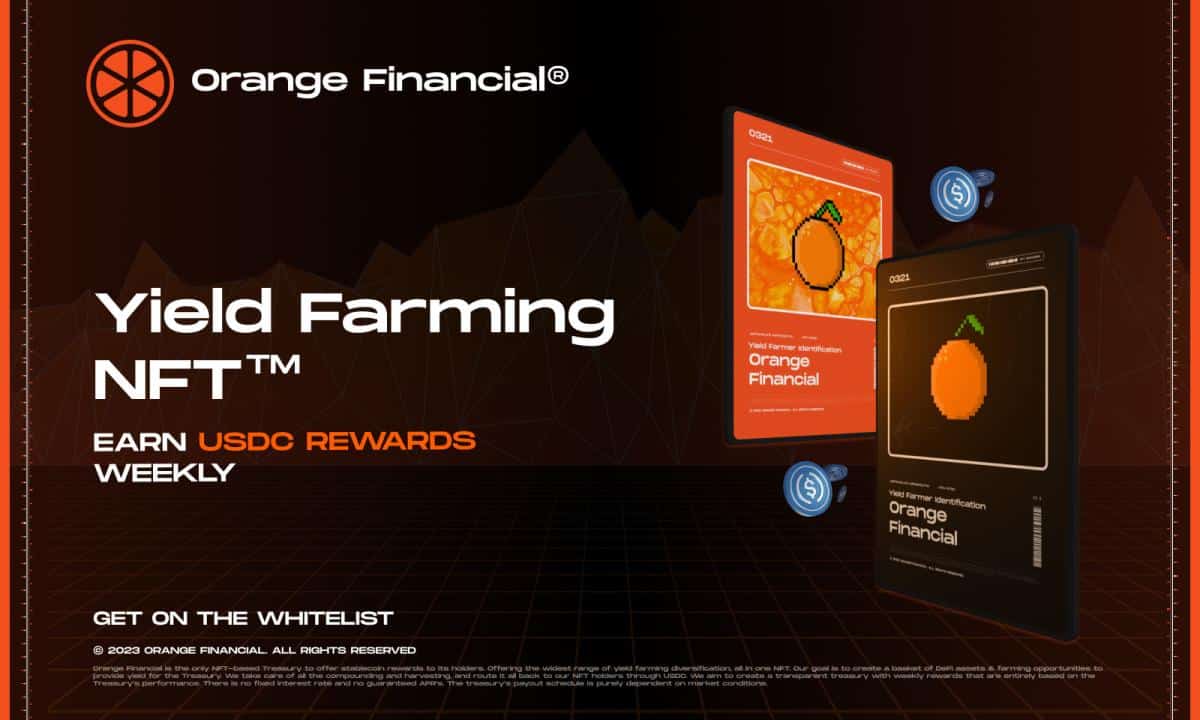2024-12-31 05:35 |
Yield farming is a method of using cryptocurrencies like Ethereum and USDC to earn interest (distributed in that coin’s denomination) through DeFi mechanisms such as staking and lending. The term “yield farming” might conjure images of a passive, relatively risk-free scenario comparable to growing crops, but it’s a fairly risky endeavor.
Yield isn’t guaranteed, and performance varies significantly.
For example, yield farming with UST, Terra’s stablecoin, through dapp Anchor, brought users about 20% yield consistently– up until UST depegged and was suddenly caught in a worthless spiral. Sure, the decentralized automated mechanism of earning yield on Anchor might still work, but the rewards are effectively worthless.
Alternatively, simply just staking Solana earns about 7% APY, and the token has comparatively maintained its value (despite having an ATH north of $250 and currently sitting at about $60.)
How Does Yield Farming Work?Yield Farming helps stimulate the flow of value within the decentralized ecosystem system,.
Let’s consider earning yield in traditional finance: money is issued by a central bank, and then commercial banks lend those funds to businesses and individuals. Banks levy an interest rate on those loans, thus making a profit.
In the cryptocurrency DeFi economy, a yield farmer recreates the role of a bank, lending their funds for a specific purpose:
These coins may go to a liquidity pool, helping a decentralized exchange facilitate trades, Or, Proof-of-stake coins can be staked to support the overall network.“Farming” refers to reaping the annualized percentage gains through any of these mechanisms.
Is yield farming worth it? Let’s dive into the mechanics of yield farming so you can become more educated on what yield farming and how it functions.
In this article, we’ll explore:
Yield farming’s relationship with DeFi How yield farming works Are your funds safe? The risks of decentralized lending The best DeFi projects for yield farming The future of yield farming Is Yield Farming DeFi?Yield farming is one of the many facets of Decentralized Finance (DeFi), and the term entered the popular lexicon of the cryptocurrency world in 2020.
DeFi, as we know it, is an amalgam of various decentralized protocols and applications. It’s notable because it often doesn’t require the same barriers to entry traditional finance systems, and just about anyone with an internet connect can participate. However, the democratization of access shouldn’t distract away from the fact that it requires a high degree of scrutiny and responsibility– it can be far riskier than its traditional finance counterpart.
DeFi sprung from one of the use cases for the Ethereum protocol. The possibility for cheap and borderless transactions pushed the creation of startups that tried to mimic banks and financial brokers. DeFi applications branched out in various directions, including novel cryptocurrency trading algorithms, derivatives trading, margin trading, money transfers, and most importantly, lending markets.
Cryptocurrency lending entered a phase of functional maturity largely due to two behemoth projects – Maker DAO, and Compound.
So, where does yield farming come into play?
How Yield Farming WorksYield farming depends on the inflows and outflows of a certain anchor asset, such as DAIm, the dollar-pegged coin that originated with the Maker DAO protocol. The DAI dollar peg makes the system more predictable by setting an intuitive value for each token, $1. Yield farming depends on a collateral of ETH or another token, which is used for loans and generates rewards.
A DeFi user usually locks in the chosen coins using the MetaMask browser plugin. Locking in funds means the wallet will communicate with a smart contract on the Ethereum network. Depending on the logic of the smart contracts, there are various ways to extract value, though the most traditional one is to levy an interest rate on a cryptocurrency loan. Users will pay fees to transact on the Ethereum network, and due to heightened interest, those fees may rise rapidly or make the network too congested to be able to participate successfully.
In the middle of March 2020, ETH prices dropped sharply, creating a perfect storm of market panic and triggering of multiple algorithms on the Maker DAO platform. The Ethereum network also slowed down transactions, not allowing the owners to increase their collateral. Multiple deposits (known as vaults) were liquidated, and DAI briefly lost its dollar peg.
In the case of falling prices, the 150% over-collateralization can help offset the risk partially. Projects like DeFi Saver can automatically increase the collateral to stave off liquidations. Liquidations happen when the minimum collateral requirement breaks down due to price volatility.
DeFi tends to work better in climate climbing asset prices, because the collateral locked for yield farming is safer. For example, if ETH prices drop by 33%, this would liquidate most deposits on Maker DAO. Smaller price fluctuations also mean holding ETH may, in the long run, be more profitable than yield farming.
Alexander Ivanov, the founder of the WAVES protocol, compares DeFi to the frenzy for initial coin offerings (ICOs). Ivanov is still optimistic about the future, only warning against another bubble due to irrational enthusiasm.
Please let’s not make a new ICO bubble out of #DeFI
— Sasha Ivanov (@sasha35625) June 23, 2020
The difference between an ICO and yield farming is that coins can be taken out of the DeFi protocol at almost any time, whereas participating in an ICO meant exchanging ETH or BTC for a new token.
The new token could be changed back only by trading, once it was listed on an exchange. In DeFi, tokens become immediately liquid as they get pairings on the UniSwap exchange, a decentralized, automated trading protocol.
Are Your Funds Safe While Yield Farming?All types of cryptocurrency investing carry risks.
In DeFi, the lender is always in control of their funds, as operations happen in automated smart contracts and do not require the oversight of third parties. Unlike token sales, a person can withdraw their collateral at almost any time.
However, smart contracts can dictate how and when you can withdraw your collateral, so be aware of you’re getting into, in particular during the cases of liquidation.
What are the Risks of Yield Farming?Locking your funds in vaults and using smart contracts is inherently risky. Smart contract exploits, which abuse the logic of the contract to generate high returns, and liquidations are a major threat to collateralized funds. The other big risk is the peg of the DAI stablecoin, which must retain its $1 value. Breaking the $1 peg will diminish the value of loans, and create panic selling and quick removal of liquidity.
The boom of DeFi also brought multiple untested protocols, using new smart contracts that led to malfunctions. The YAM DeFi protocol drew in close to $300 million in funds, but due to unforeseen smart contract behavior, led to the printing of thousands of billions of extra tokens. Other projects also release untested smart contracts, which may lead to losses of funds.
Another major concern is a more recent development: the Compound DeFi fund shows more than 1.3 billion DAI in its lending and borrowing markets, while there are around 421 million DAI coins created as of August 14, 2020. This situation resembles a debt bubble, in which cryptocurrency assets are created via the process of lending, thus circulating value that is artificially amplified by yield farmers.
This situation may put pressure on the DAI dollar peg, and create more serious fallout in case of liquidations. So far, as of August 2020, greed and a price boom allow for the rapid growth of Compound DeFi.
What are the Best Projects for Yield FarmingMaker DAO is one of the earliest successful attempts at cryptocurrency lending. Initially, lending DAI backed by ETH drew the initial bulk of capital into DeFi.
Compound, a similar lending platform, followed soon after. Compound also evolved beyond lending, launching its own incentive COMP token. This caused an explosion in DeFi funding between July 15 and early August, when the amount of funds locked in yield farming doubled, from roughly $2 billion to above $4 billion.
Both Compound and Maker DAO competed for the top spot in DeFi, based on locked value and on their well-known brands. In terms of algorithmic trading, projects like Augur, Bancor, and dy/dx remain prominent in the crypto space.
Alternatively, and not particularly “yield farming” per se, decentralized lending platforms and cryptocurrency interest accounts such as BlockFi and Celsius provide upwards of 8.6% APY on stablecoins without many of the complications of the yield farming outlined in this article, so they’re worth checking out if that’s up your alley.
Final Thoughts – What is the Future of Yield FarmingThings tend to happen very fast in the cryptocurrency world, and yield farming seems to have spiked into the mainstream foray in the blink of an eye.
If one was compelled to cast a prediction for the future of Yield Farming, we recommend looking at all possibilities– both positive and negative.
For example, yield farming can mobilize otherwise idle tokens, potentially generating passive income for their holders.
On the other hand, negative possibilities range from crisis events such as price crashes or exploits that manage to trick the smart contract and reap gains from collaterals. DeFi isn’t regulated and doesn’t come with the legal protections that come with more centralized financial institutions.
For instance, DeFi tokens are not considered securities, and the US Securities and Exchange Commission hasn’t taken any decisive actions against them.
While some yield farming projects are well-established and draw in the bulk of collateral, new DeFi algorithms are constantly popping up. Some DeFistartups use copied and unaudited smart contracts, posing risks for unexpected operations and effects. The YAM yield farming project, for instance, has recently crashed, taking some of the market collateral with it.
In August 2020, the WAVES platform expanded into DeFi. A long list of former ICO tokens that were repurposed for various forms of DeFi, starting with BAT, LINK, 0x, Kyber Network. Yield farming is a mercenary-like approach to cryptocurrency, where risk-takers seek out the highest yields, causing token price volatility along the way. Many DeFi projects are still in their nascent phases and can be rather difficult to understand, yet many newcomers are rushing in to get a piece of the pie. We advise our readers to do their own research into the intricacies of each platform– don’t lock in any funds you can’t afford to lose.
The post What is DeFi Yield Farming? A Beginner’s Guide on the Risks and Rewards of Earning Yield in Crypto appeared first on CoinCentral.
origin »ETH 20 Day MA Crossover Yield Set (ETHMACOAPY) íà Currencies.ru
|
|







